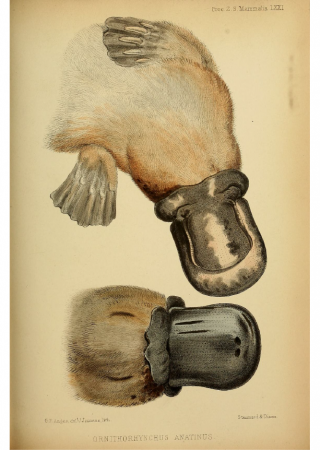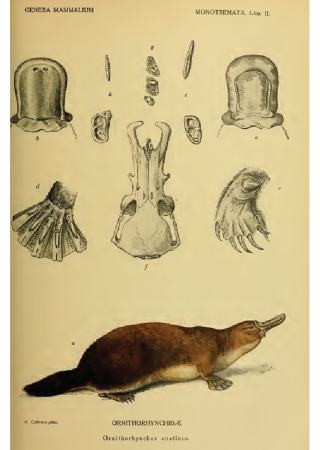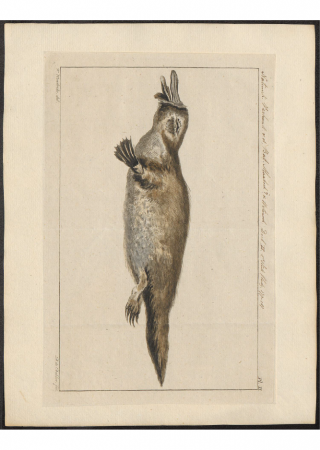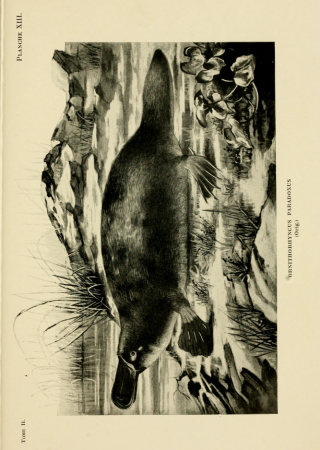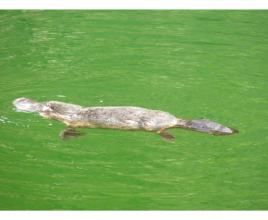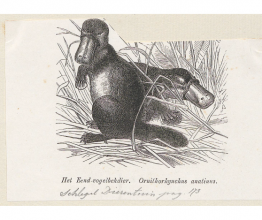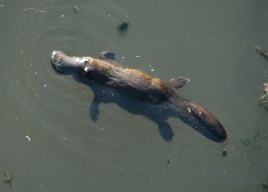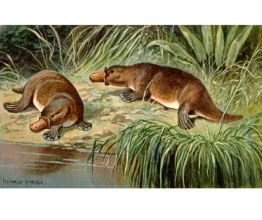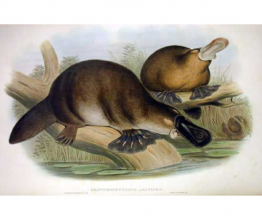Duck-billed Platypus
Ornithorhynchus anatinus
Did you know that… ?
- ...the platypus is one of several monotremes (egg-laying mammals), and also one of the few mammals that are poisonous?
- ...only males are poisonous, and they use their poison in battles with other males?
- ...a platypus locates prey by using, among other things, its sensitive snout, which is capable of detecting weak electrical fields?
- ...a platypus is an endemic mammal, living only in eastern Australia and Tasmania?
- ...the female platypus lays two eggs in a burrow near a riverbank?
- ...the platypus is an excellent swimmer?
- ...close relatives of the platypus are echidnae, living in Australia, Tasmania and New Guinea?
- ...the platypus eye has three eyelids?
- ...the platypus young lick their mother's milk off special folds in the mother's skin?
Practical info
Basic information:
Phylum - Chordata
Class - Mammalia
Maximum length - 60 cm
Eats - aqueous invertebrates
Habitat - Australia
Type of poison - peptide mix
Distinguishing marks:
The body is flattened, covered in dark brown fur with a silver sheen. All four paws have strong claws, with webs between the toes. The snout is reminiscent of a duck's beak. Eyes are small and on the side of the head. Tail is flat.
Characteristics and poison
The platypus is classified among egg-laying mammals - monotremes. Male platypuses have a poison apparatus on their hind legs. There are poison glands in the thighs and a hollow spur near the heel. The sting is not dangerous to humans, but is extremely painful and causes rapid swelling in the stung area. It may also cause increased temperature. For smaller mammals, like dogs, the sting can be fatal. The purpose of the platypus's poison system has not been satisfactorily explained. It may be for defending the burrows when young are present.

